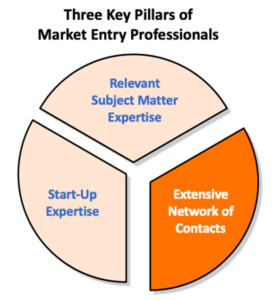
Entering the Asia-Pacific (APAC) market as a non-APAC company comes with a variety of unique challenges. In this five-part series, Peter Hum, Managing Director of StrateValue Pte Ltd outlines some of the key elements to be aware of when establishing a direct presence in the APAC region. Hum, who lives in Singapore, has nearly two decades of experience effectively entering American companies into Asia. Drawing on his years of expertise, Hum has compiled this series of best practices to help businesses who wish to expand into APAC. Read on to learn about the people, patience, and relationships that are necessary to launch a successful entry into the APAC marketplace. Read Part 1 of this article series.
The right human resources in all aspects of any business is both a strategic and operational imperative that must never be discounted. The immediate need to get this right from the onset becomes more apparent when you are focused on market entry situations. Getting this right will make all the difference between success and failure in the short to mid-term.
One key question you need to ask yourself is this: “What is Asia market entry all about?”
In Western approaches to business, it’s all about:
1. Understanding the target market.
2. Going out there to build a sales pipeline through the missionary work of being on the ground.
3. Having the right person from the company who understands their business and their inherent business culture to drive Asia-based business.
Of course, these approaches are key and critical to all business success. However, in Asia, there is one key element that is crucial and must NEVER be discounted when performing market entry into Asia. That is the power of personal relationships as the primary driver to do business in the region.
Market entry is all about navigating new markets by leveraging on existing hot or warm relationships that will grant you immediate access to key prospects. This activity will have the greatest chances for lead conversion to active opportunities.
In Asia market entry, this requirement cannot be emphasised enough. This is why getting the right people to perform market entry is the key to success in-region.
What is the right profile for someone to perform market entry?They MUST possess these three critical elements or what I refer to as the three key pillars for any market entry activity:

They must possess some level of subject matter expertise in your area of business in order to deliver an acceptable level of expert guidance on how your business relates to the Asia region. Guidance in this area typically refers to the following topics:
Asia market entry is typically performed by one individual who will build the regional business from scratch. As such, this individual must have deep experience starting a business with nothing more than an idea and be able to build a local organisation within a lean start-up context.
Start-up situations are not corporate environments where there is a local team to support them in the many functional areas to drive business. Start-up situation requires individuals who are aggressive sales hunters who understands each and every functional area of business and has the ability to put these processes together to support a business from infancy to maturity.
Start-up market entry specialists are professionals who start off as lone hunters, then transitions to hiring and bringing on the right talent to support business growth. These professionals are highly adaptive and have the ability to work alone during business inception and then transforms to become a senior level business executive running a larger company as the business grows.
This third pillar is perhaps one of the most crucial piece of the puzzle that will determine the growth of the sales pipeline within the first 3 to 6 months of market entry into Asia.
Asia market entry specialist are master networkers who possess an impressive rolodex of contacts whom he can call upon to start conversations around your area of business. Their contacts span senior executive levels to operational level professionals, and they call upon these contacts depending on the context of business development requirements. If they do not have direct contacts as entry points into organisations, they will have contacts who will assist to get them in touch with the right individuals in question. In the end, it’s all about personal relationships that will determine a business development outcome.
Asia market entry is both a science as well as an art. It requires special professionals that holds a special combination of skills not easily found. When seeking and qualifying these professionals, ensure they have a track record of success and ensure they have some level of longevity in their business. Only then will you have the greatest chances for success within a region experiencing explosive growth!
Next up, the “need for enduring patience” to truly succeed in Asia!
How can we help?
Normal business hours are 8:00am to 5pm EST, Monday to Friday.
©2024 AOTMP University. All rights reserved.
"*" indicates required fields